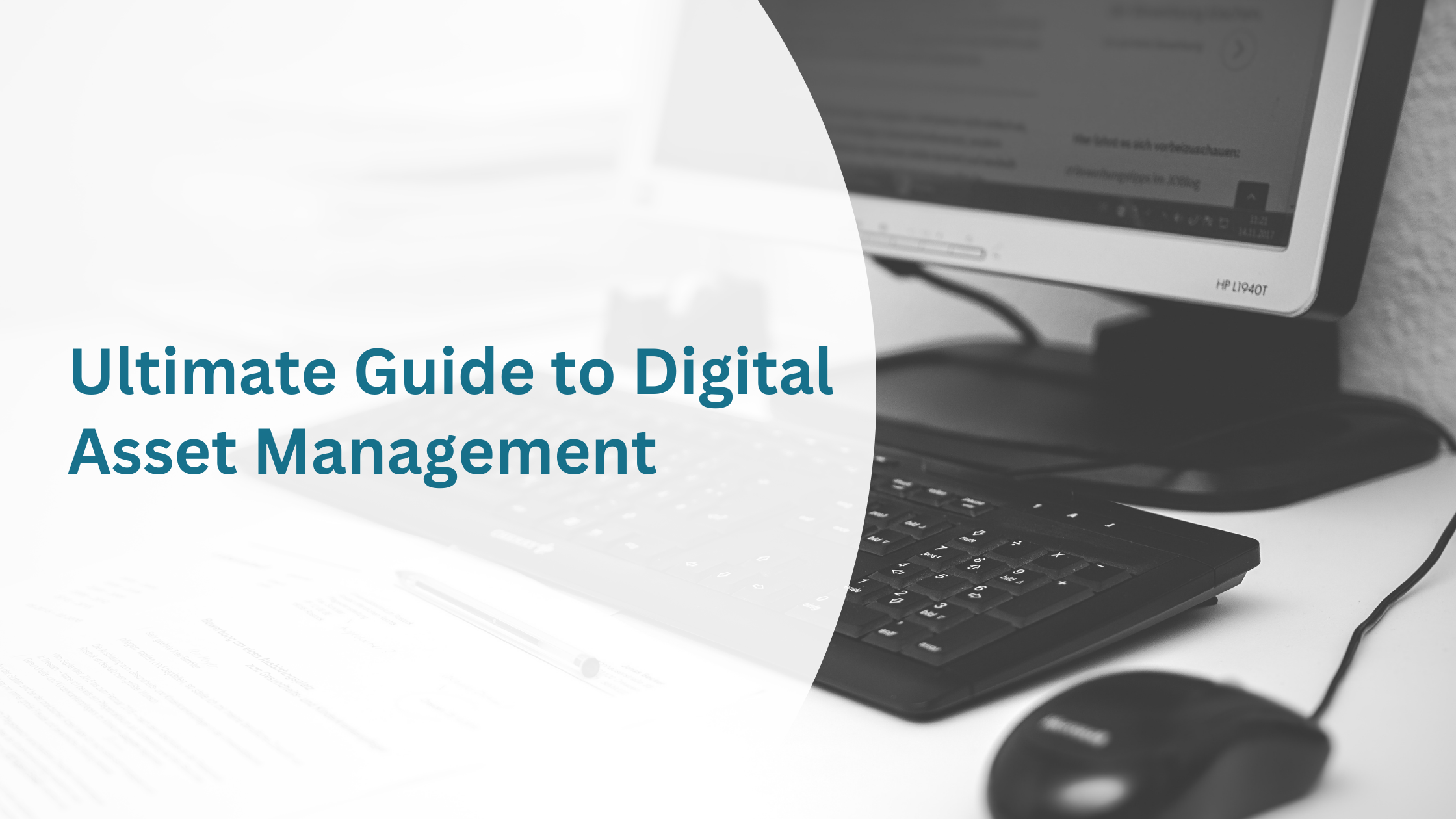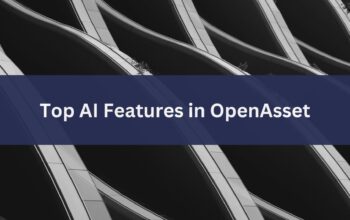Artificial intelligence (AI) is no longer something from the future. It’s here and it’s actively transforming the civil engineering sector. In fact, the global AI in construction market was valued at approximately $2.93 billion in 2023 and is projected to grow at a compound annual growth rate (CAGR) of 26.9% from 2024 to 2030.
One thing is clear: AI in civil engineering is changing infrastructure building, management, and maintenence. The best part? You don’t need a massive tech transformation to begin. Many firms already use AI-powered tools to automate tedious tasks, surface insights from complex data, and reduce costly errors.
In this blog, we’ll explore 15 innovative and practical AI applications in civil engineering and what these innovations mean for the future of the built environment.
What Is AI in Civil Engineering?
Civil engineering AI uses technologies like machine learning, computer vision, and generative design to improve infrastructure planning, building, and maintenance. These tools automate tasks, analyze complex data, and support faster, smarter decisions at every project stage.
From spotting structural issues early to streamlining schedules, AI is becoming a practical, everyday partner for engineering teams. It’s not about replacing human expertise but amplifying it.
| Hand-picked related content: If you want to understand AI’s role in the Architecture sector, check out our blog on AI in Architecture, featuring benefits, use cases, and examples. |
ChatGPT and LLM’s Role in Civil Engineering
Despite being a newer technology, generative AI (GenAI) adoption is growing fast, with 75% of IDC’s 2024 AI opportunity study respondents saying they now use it, up from 55% in 2023.

Large Language Models (LLMs) like ChatGPT (a GenAI tool) aren’t just making waves in marketing and admin—they’re starting to prove useful in civil engineering, too. While they won’t design a bridge or run simulations, they’re surprisingly helpful for technical documentation, report drafting, and even proposal writing.
Need to summarize a complex geotechnical study for a client? Draft an RFP response? Translate technical specs into a format the broader team can understand? Tools like ChatGPT can speed that up, especially when paired with human expertise.
Since going mainstream, LLMs have become an easy entry point for civil engineering firms exploring AI. They don’t require massive datasets or custom integration to start providing value, making them a practical stepping stone in a larger digital transformation strategy.
How AI for Civil Engineering Is Being Used
The real power of AI lies in how versatile it is. Whether you’re planning infrastructure, monitoring structural health, or crafting better proposals, there’s likely an AI solution already changing how the job gets done.
Below, we break down the most impactful use cases showing how AI civil engineering works today.
1. AI-Powered Design and Planning
Infrastructure design is no longer only blueprints and CAD files. With AI, engineers can instantly generate multiple design options. Each option keeps performance, cost, and sustainability in mind.
A McKinsey survey indicates that 71% of organizations now use GenAI in at least one business function, up from 65% earlier in 2024.
Generative design tools apply project constraints like materials, site conditions, and load requirements to produce smarter layouts from the start.
AI also handles the heavy lifting of revisions, giving teams more time to focus on what works best. Integrated with BIM platforms, it helps catch compliance issues and design clashes before they lead to costly rework.
2. Project Management and Project Scheduling
Keeping a civil engineering project on track is no small feat. With so many moving parts, even small delays can trigger major setbacks. AI-powered scheduling tools help teams spot conflicts early, adjust timelines in real time, and allocate resources where needed most.
AI can analyze historical project data to flag bottlenecks before they happen. It also continuously updates as conditions change, so if one task falls behind, the schedule adjusts automatically.
For project managers juggling multiple sites or subcontractors, this level of foresight isn’t just helpful, it’s a game changer. And because AI tools can integrate with existing project management platforms, the learning curve is minimal.
Don’t reinvent your workflow— just make it smarter.
3. Infrastructure and Structural Health Monitoring
Once the building phase is over in a project, the real work begins: keeping it safe, stable, and up to code.
Fortunately, AI is making that easier by powering smart monitoring systems that detect structural issues long before they become visible or dangerous.
Using sensors, drones, and computer vision, AI can track things like stress levels, vibrations, and material fatigue in real time. These tools feed data into predictive models that can flag early signs of wear, corrosion, or failure across bridges, tunnels, and high-rise buildings.
Instead of relying on periodic manual inspections (which are costly and can miss delicate signs), civil engineers now get continuous, data-backed insights. This means faster response times, fewer surprises, and longer lifespans for critical infrastructure.
4. Autonomous Systems
From self-driving construction vehicles to automated surveying drones, autonomous systems are starting to make their mark on civil engineering sites. These AI-driven machines handle repetitive or high-risk tasks with precision. This frees up human crews to focus on higher-value work.
Autonomous bulldozers can grade land based on digital models, while drones with LiDAR and GPS can scan a jobsite in minutes, delivering detailed topographic maps faster than any ground crew. These tools aren’t just fast, they’re consistent. This reduces the risk of error and increases site safety.
As technology improves, expect more hybrid crews: machines handling the grunt work, while engineers oversee strategy and quality control.
5. Predictive Maintenance
Maintenance used to be reactive or scheduled based on guesswork. Now, AI helps teams predict equipment failures before they happen. This approach uses real-time data and machine learning to spot subtle patterns that indicate wear and tear.
For civil engineers managing large assets like cranes, pumps, or HVAC systems in tunnels and bridges, AI can track performance indicators (like temperature, vibration, or runtime) and flag anomalies early. This allows teams to schedule repairs before equipment breaks, avoiding costly downtime and emergency fixes.
It’s a shift from “fix it when it fails” to “fix it before it does.” That’s not just smarter, it’s also more cost-effective and safer.
6. Risk Assessment and Mitigation
AI transforms risk management from a static checklist into a dynamic, data-driven process. By analyzing historical project data, site conditions, weather forecasts, and material supply chains, AI can flag potential risks before they become expensive problems.
For example, machine learning models can predict where a construction delay is most likely to occur or identify safety hazards based on past incident reports. This lets teams proactively adjust plans, reallocate resources, or reinforce high-risk areas without waiting for issues to unfold in real time.
With AI, risk assessment becomes less about reacting and more about building smarter strategies.
7. Sustainability and Environmental Impact
Sustainability isn’t just a buzzword—it’s now crucial in the design process. AI is helping civil engineers create greener infrastructure by modeling environmental impact early in the project lifecycle.
From estimating embodied carbon in materials to simulating energy use and runoff, AI tools provide actionable insights that drive more sustainable choices.
Need to compare multiple building materials or construction methods? AI can run those scenarios instantly, showing you which option reduces emissions or conserves water. It can also help optimize routes and logistics to cut fuel use on job sites.b
As regulations tighten and clients demand greener solutions, AI makes it easier to meet those goals without compromising project performance or profitability.
8. Data-Driven Decision Making
Civil engineering projects generate mountains of data—site conditions, material specs, budgets, timelines, and more. AI helps teams turn data into real-time insights that drive better, faster decisions.
Instead of relying on spreadsheets or siloed systems, AI aggregates information across platforms, identifies patterns, and highlights key trends. Whether optimizing a construction sequence or forecasting material shortages, AI supports decision-making with facts, not gut feelings.
The result? Fewer surprises, tighter margins, and more confident planning from kickoff to closeout.
9. Geotechnical Engineering
Subsurface conditions are some of the biggest unknowns in civil engineering, and AI is helping to bring more clarity underground.
Fortunately, AI models can predict ground behavior more accurately than traditional methods by analyzing geological survey data, soil samples, and sensor inputs.
This is especially useful for foundation design, tunneling, and slope stability analysis. AI can simulate how different soil types respond to stress or water infiltration, reducing the chances of delays, cost overruns, or structural failures due to unexpected ground movement.
Ultimately, better insights below the surface mean safer, more efficient designs above it.
10. Machine Learning Algorithms
Machine learning (ML) is the engine behind many AI applications in civil engineering. ML algorithms analyze historical data—like project timelines, material costs, and weather patterns—to spot trends and make predictions humans often miss.
For example, ML can help forecast delays based on subcontractor performance or predict cost overruns by analyzing procurement timelines. It can also fine-tune structural models based on how similar assets perform over time.
The power of ML lies in its ability to improve. The more data it takes, the more accurate and helpful the recommendations become.
11. Digital Twin Simulations
Digital twins are virtual replicas of real-world assets. When paired with AI, they become powerful tools for civil engineers. These models simulate how a structure or system behaves over time, based on live data from sensors, materials, and environmental conditions.
Need to see how a bridge will handle traffic loads 10 years from now? Or how a new drainage system will respond to increasingly extreme weather? A digital twin can show you, before you ever pour concrete.
With AI running behind the scenes, these simulations aren’t just static models—they’re predictive, responsive, and useful for proactive maintenance, planning, and design optimization.
12. Smart City Development with Artificial Intelligence
AI is a cornerstone of smart city planning. It helps civil engineers design infrastructure that’s functional and responsive. AI helps cities operate more efficiently and sustainably by integrating data from traffic systems, energy grids, public transport, and environmental sensors.
Civil engineers use AI to model urban growth, optimize traffic flows, and plan public works that adapt to real-time conditions.
For example, predictive algorithms can help prioritize road maintenance based on usage and wear, or suggest better routes for emergency vehicles during peak congestion. It’s about building smarter, more livable cities.
13. Computer Vision
Computer vision gives civil engineers a new way to see the jobsite—literally. AI can monitor construction progress, detect safety hazards, and verify quality in real time. Thanks to image and video processing from drones, mobile devices, or fixed cameras.
It’s like having a second set of eyes on site, scanning for things humans might miss. Think cracks in concrete, missing rebar, or workers not wearing proper PPE. Some systems even compare site photos against BIM models to spot deviations early.
This means fewer delays, better compliance, and a smarter way to stay on top of every project detail.
14. 3D Modeling and Visualization
AI is taking 3D modeling to the next level by automating workflows and enhancing visualizations, helping teams build more accurate, interactive models faster.
For example, AI can analyze design constraints and automatically generate 3D models that meet structural and environmental requirements. It can also refine visualizations by simulating real-world conditions like sunlight, wind flow, or pedestrian traffic.
This makes it easy to communicate ideas with stakeholders, reduce design errors, and make smarter decisions early in the project lifecycle.
15. Proposal Writing and Business Growth With AI
Winning work is just as important as delivering it, and AI is helping civil engineering firms gain a competitive edge in the proposal process. AI can recommend content, highlight relevant case studies, and even auto-generate draft responses.
Platforms that integrate AI with digital asset management (DAM), like OpenAsset, take this even further. They help marketers and proposal teams quickly find on-brand images, employee bios, and project data—so they can build polished, personalized proposals in less time.
It’s about speed while showing up smarter and more strategic.
Top AI Tools Used in Civil Engineering
AI is only as good as the tools that put it to work. Fortunately, civil engineering teams can access specialized platforms that apply AI to improve design accuracy, streamline workflows, and support better decision-making.
Here are some of the top AI-powered tools making an impact in the industry today:
Autodesk Civil 3D
Autodesk Civil 3D uses AI-enhanced features to streamline infrastructure design and documentation. It helps engineers adjust plans faster using corridor modeling, grading optimization, and dynamic surfaces—all while syncing with BIM platforms.
It’s a go-to for road, rail, and site design teams who need a smarter, faster way to deliver on spec and schedule.
Bentley OpenRoads and OpenBuildings
Bentley’s suite of tools uses AI for generative design, clash detection, and reality modeling. With IoT sensors and GIS data integrations, engineers can simulate infrastructure behavior under real-world conditions, helping teams make more informed design and maintenance decisions.
These tools shine in transportation and urban development projects, where complexity and scale demand next-level insight.
Smartvid.io
Smartvid.io uses computer vision and machine learning to analyze jobsite photos and videos, automatically identifying safety risks, PPE violations, and progress updates. It plugs directly into construction management platforms and turns visual data into actionable insights.
For firms prioritizing site safety and compliance, this is a powerful layer of risk mitigation without adding more manual checks.
Deltek
Deltek uses AI and analytics to support project lifecycle management—from planning and resource allocation to budgeting and forecasting. Its predictive features help civil engineering firms spot schedule risks, track performance, and improve profitability.
For firms juggling multiple active projects, Deltek’s insights help leadership make smarter, faster decisions that keep teams aligned and margins healthy.
OpenAsset
While not a traditional engineering tool, OpenAsset uses advanced AI-powered features, like smart tagging and AI visual search, to help civil engineering teams quickly find project photos, staff bios, and past work when building proposals or marketing materials.
With OpenAsset— an easy-to-use DAM platform that centralizes your digital assets— you save time and ensure every project reflects your firm’s best work.
Challenges and Considerations for AI and Civil Engineering
Adopting AI in civil engineering doesn’t come without its roadblocks. From cost to compliance, teams face real challenges when integrating new tech into long-established workflows. But knowing what to expect—and how to prepare—can help your firm get ahead of the curve.
Understanding AI’s Potential
AI has a huge upside, but many firms aren’t sure where it fits into their day-to-day. The challenge is technical and cultural. Teams need clarity on what AI can (and can’t) do, and how it can augment, not replace, their expertise. Without that understanding, even the most powerful tools go unused.
High Upfront Costs
Let’s be honest: implementing AI isn’t always cheap. Whether it’s custom software, system integration, or training, the initial investment can be steep, especially for smaller firms. The key is focusing on high-impact use cases that deliver ROI early, like automating routine tasks or improving project estimates.
Data Privacy and Protection
AI runs on data. However, in civil engineering, that data often includes sensitive project details, proprietary models, or geospatial insights. When looking at any AI solution, you must understand how it stores, processes, and protects information. Failing to do so can open the door to major compliance and cybersecurity risks.
Legal and Ethical Considerations
AI-generated decisions—especially in safety-critical fields like civil engineering—raise complex questions. Who’s responsible if something goes wrong? How do you ensure algorithms are fair, explainable, and auditable? These aren’t just legal concerns; they impact trust with clients, regulators, and the public.
Validation and Verification
Before AI can inform design or scheduling decisions, its outputs need checking, just like any engineering calculation. Firms must build in processes to validate AI results, ensuring they align with standards, safety codes, and real-world conditions. Otherwise, you’re flying blind with automated suggestions.
The Need for a Skilled Workforce
AI tools don’t run themselves. Successful adoption requires people who understand both the technology and the engineering context. That means investing in upskilling your current team or hiring new talent who can bridge the gap between civil engineering and data science.
Future Trends for Artificial Intelligence in Civil Engineering
A study commissioned by Microsoft and conducted by IDC found that for every $1 organizations invest in generative AI, there’s an average return of $3.70. With returns like that, it’s no surprise investor pressure for AI adoption has surged, with 90% of investors in early 2025 urging companies to prioritize AI integration, up from 68% in late 2024, according to Business Insider.
As AI adoption accelerates, civil engineering firms shift from early testing to strategic use. This is reshaping how teams collaborate, how data is used, and how infrastructure evolves.
Here’s a look at where AI for civil engineering is heading next—and what teams should be watching closely:
Integration With IoT and Big Data
The future of civil engineering is hyper-connected. With IoT sensors embedded in roads, bridges, and buildings, engineers can access continuous real-time data, from traffic volume and vibration to moisture levels and material stress.
AI will act as the brain behind this data flood, analyzing patterns and making predictive decisions faster than any human team could. This combination of IoT and AI will allow for smarter asset management, faster emergency response, and even self-adjusting infrastructure in the long term.
For example, in Lisbon, Portugal, Bentley Systems’ flood simulation software utilizes digital twins and real-time data to model flood scenarios, enabling the city to implement infrastructure changes that have mitigated flood risks significantly.
Human and AI Collaboration
As mentioned, AI isn’t replacing engineers—it’s becoming their co-pilot. The most forward-looking firms are already building workflows where AI handles the data crunching, and humans focus on strategy, oversight, and design intent.
Think of AI suggesting dozens of design alternatives based on constraints, while engineers guide the process and apply context. This partnership is where creativity and computation meet—and where the most innovative results are born.
For example, at Carnegie Mellon University, researchers are exploring how human-AI collaboration can improve operational safety in civil infrastructure systems, such as airports and water treatment facilities.
Advancements in Algorithms and Machine Learning
As machine learning models evolve, they’ll become better at learning from smaller, more diverse datasets, making them more accessible to firms of all sizes. Newer algorithms will also be more transparent, helping teams better understand how AI reaches its conclusions (a must in safety-critical applications).
These advances will support more adaptive, real-time systems that adjust to site conditions, user behavior, and external factors on the fly.
For example, engineers are using AI algorithms, with machine learning, to optimize structural designs and minimize material wastage, thereby enhancing the efficiency of construction projects.
Leverage AI Features for AEC With OpenAsset
AI isn’t coming—it’s already here.
AI is changing how civil engineers design, build, and deliver projects—and this is just the beginning. But as powerful as AI is, it works best when paired with the right tools and workflows.
That’s where OpenAsset comes in. Our DAM platform with AI-powered features helps AEC teams organize and find the digital assets they need to build proposals, showcase past work, and win more business, with less time spent digging through folders.
As AI continues to evolve, so will the way you work. Don’t fall behind.
Ready to work smarter, not harder?




